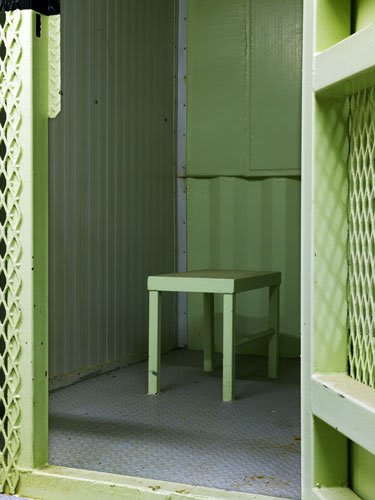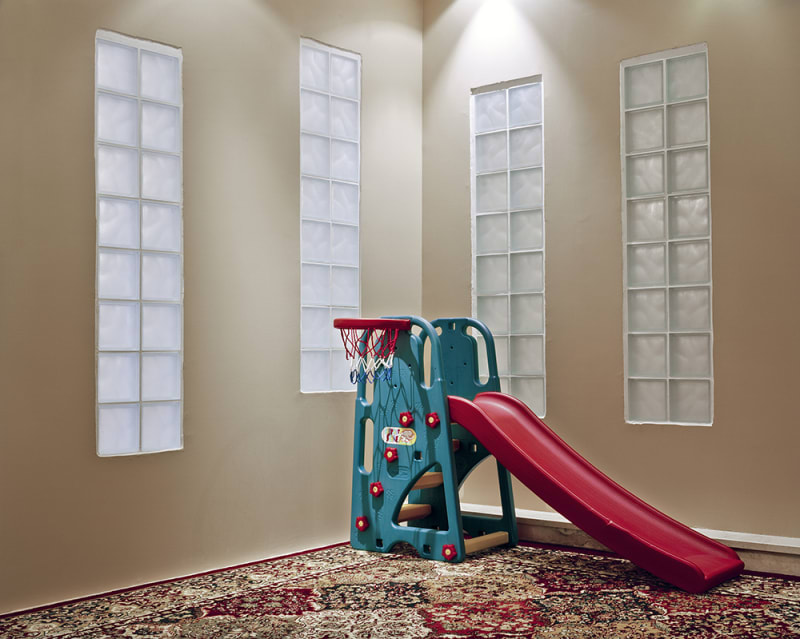
Overview
This is a study of a home, of a very particular idea of home at a very particular time in our history.
'When you are suspended by a rope you can recover but every time I see a rope I remember. If the light goes out unexpectedly in a room, I am back in my cell.'
Binyam Mohamed, Prisoner #1458
This is a study of a home, of a very particular idea of home at a very particular time in our history.
These images are from three places: The naval base at Guantanamo which is home to the American community and of which the prison camps are just a part; the complex of camps where the detainees have been held; and the homes, new and old, where the former detainees now find themselves trying to rebuild their lives. They seek to evoke the memories that punctuated their years of confinement, the process of disorientation and dislocation central to the techniques of incarceration at Guantanamo, and explore the legacy of disturbance such experiences have in the minds of these men.
Glimpsing the evening sun through a window is a simple thing but readjusting to having the freedom to do so may not be so simple. Like a net curtain, memories can obscure the view. How easily do you adjust to cutting fresh fruit at your table after being strapped to a chair with a tube forced down your nose?
On the naval base I found a small-town American community with objects and spaces that echoed the confinement of the camps, and the themes of a wider America traumatised after 9/11 and determined on revenge and protection at all costs. Tying Jesus in knots for the navy is an interesting fusion of religiosity and militarism.
The narrative of these images asks the viewer to jump from prison camp detail to domestic still life, from life outside to the naval base and back again. From light to dark.
Edmund Clark
This is a study of a home, of a very particular idea of home at a very particular time in our history.






